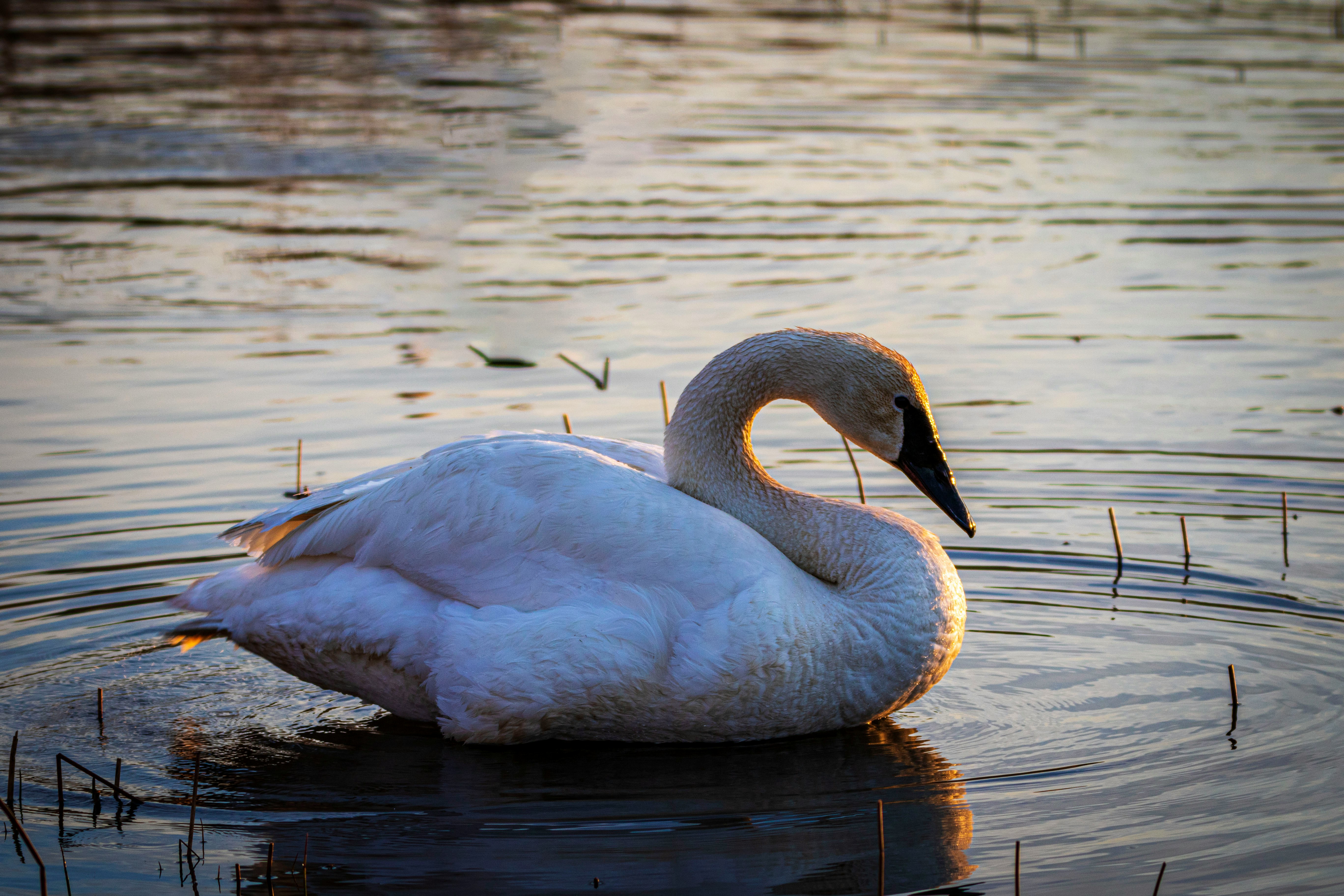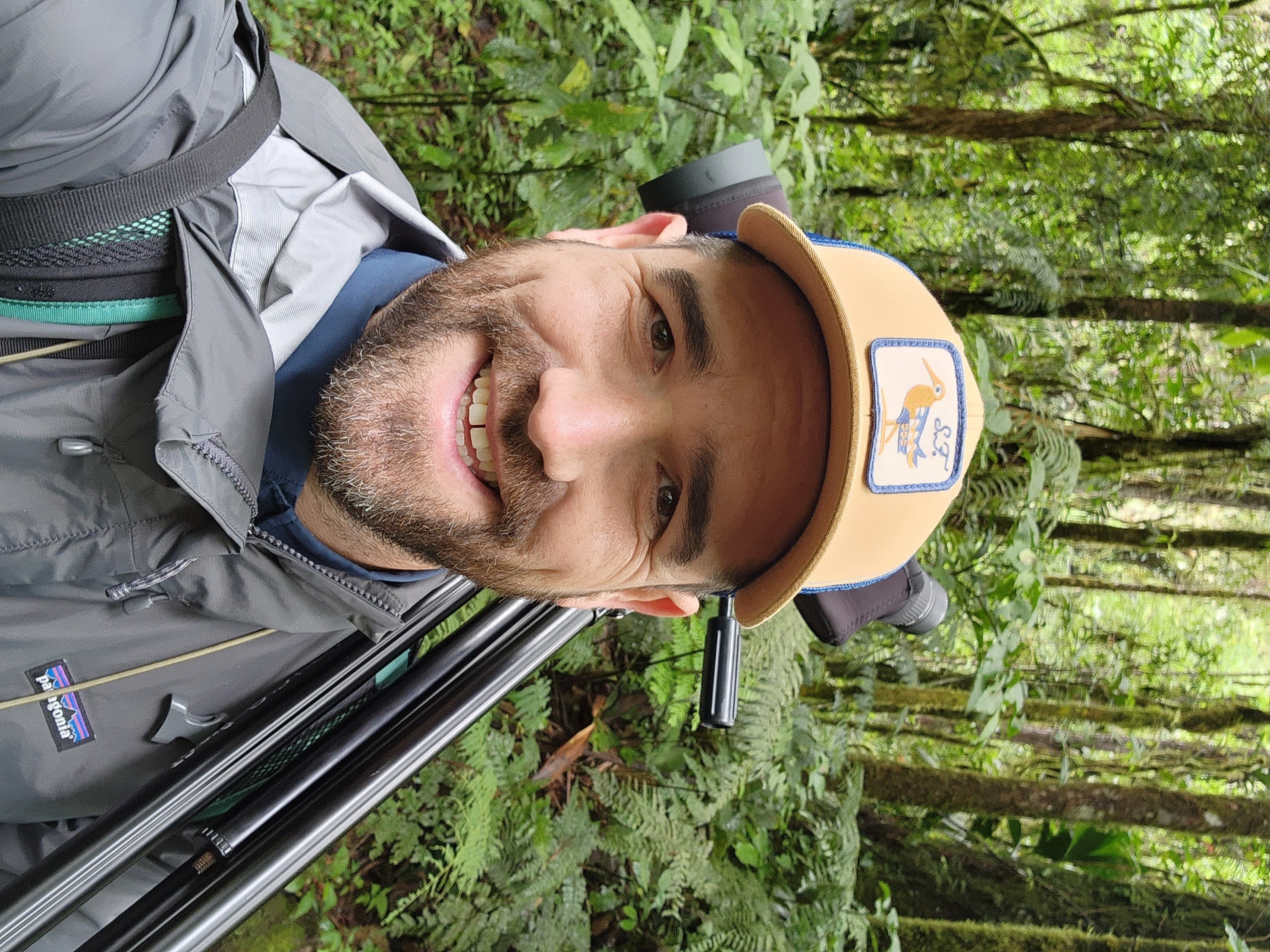
"Birds are my profession, hobby, family, and pretty much all aspects of my life."
How would you introduce yourself and what you do in life?
I’m the bird man! This may be a slight overstatement, but I do find myself occasionally giving myself that title in conversation as birds are my profession, hobby, family, and pretty much all aspects of my life. More technically, I am the Senior Director of Programs at Birds Georgia. I oversee a skilled team of people who are working hard at building places where birds and people thrive through conservation activities, educational programs, and community engagement projects. This ranges from international birdwatching travel to prescribed burning to improve habitat to programs at elementary schools across the state. Away from work, I like to spend time outside with the birds, traveling near and far with my wife and daughter, eating diverse and delicious food, and watching probably too much TV and movies.
We are creating an online magazine, Plumage, focusing on birds in the arts and media, but also in nature and in Atlanta. Our first magazine issue focuses on swans. Could you tell us about the swan species found in the United States, and specifically in Georgia?
Swans are an interesting group of birds to think about in a US or Georgia perspective. We technically have two native species in the United States: the Tundra Swan and the Trumpeter Swan, as well as the Whooper Swan, which is native to Asia and Europe but is very rarely encountered in Alaska and other coastal areas. What makes this group of birds so interesting is that there are many species that are domesticated and found in private collections or at community parks. The most well-known of these is the Mute Swan. Mute Swans are probably what people imagine when they think of a swan, but they are actually native to Europe and not the US. Enough individuals of this species have escaped domestication that in parts of the US (the Midwest, for example), birding rules allow one to count them as a feral population. Georgia isn’t a hotbed for swan activity. We are too far south to get Tundra or Trumpeter Swans regularly, though small numbers (a handful of birds) of presumed wild swans show up most years. The biggest challenge is determining whether these birds are wild migrants or simply escaped pets. Many sites across the state have domesticated swans, primarily Mute Swans, but also Tundras and Trumpeters.
Can you share some insights into swans' behavior in the wild?
Swans are elegant birds, very large (the largest waterfowl in our region), stunning when seen in the wild, and they often elicit feelings of cold weather and of sparsely inhabited lands. Swans around the world are typically found in temperate habitats, often in colder areas near either pole. During the breeding season, pairs nest on the edges of marshes and wetlands. They are fierce defenders of their young, which can often be a problem for an unsuspecting kayaker getting too close for comfort. Away from the breeding season, most individuals migrate south once their home bodies of water freeze. They often form large flocks of trumpeting birds and occasionally gather together on winter wetlands or even out in plowed farm fields. Swans fit into the dabbling category of waterfowl, dipping just their upper parts underwater when they are looking for vegetation to feast upon.
What are the biggest conservation challenges facing swan populations in Georgia or the broader region?
Swans, like most birds, are challenged most by habitat loss. Trumpeter Swans used to be quite low in numbers but have rebounded greatly over the past 90 years. They typically do not do well around human disturbance so as we continue to develop more and more land in Georgia and the United States, that could negatively impact swan population. In the past, overhunting was an issue but today, both native species are doing well enough that regulated hunting seasons are allowed. Lead poisoning, collisions with structure/wires, and changes to their habitats (invasive species, climate, etc.) also may impact numbers negatively.
What is your stance on how human activities, like habitat encroachment or feeding swans in parks, impact their well-being?
For wild swans, human activities typically result in generally a negative interaction. Fortunately, most of these breeding swans are far from a lot of people. In more urban environments, where swans are fed or in close proximity to boaters or people fishing, the birds are more accustomed to human behavior. Even for these semi-domestic birds, encroachment can be too much and endanger both the bird and the person. On rare occasions, swans go to protect themselves or their young from people and the end result is an injured person who met the end of wing smack! In addition to scaring the bird or risking the health of the bird/person, a lot of feeding of swans and other waterfowl is done using poor food options. Bread for example is not good for any waterfowl species and can have physical impacts and developmental issues. In general, if swans that are close to humans are given space and not fed, or fed only a healthy pellet of food, things should be fine for their well-being.

Can we say that swans are indicators of healthy ecosystems? Could you elaborate on how their presence (or absence) signals environmental changes?
I do think swans can be used as indicators for the ecosystem. First, climate change and warmer temperatures can potentially have a large impact on swans. It could inhibit their breeding success. Warmer winters could impact their migration strategies or lead to birds selecting less than ideal overwintering locations. Swans dipping in number could indicate issues with our wetlands and the health of the broader northern forests which are vital to so many migratory bird species. If swan numbers stay stable or increase, I think we can take that as a good sign for the water-based ecosystems in the northern parts of our country. Birds no longer showing up at focal wintering locations or numbers trending down more generally could indicate climate issues or other large-scale issues.
As a conservationist, how do you view the intersection of science and art in raising awareness about bird conservation?
I think it is so vital. In my opinion, many ornithologists or research institutions are doing incredible science but often fail in telling the story. At Birds Georgia, we are always trying to think of new and creative ways to tell the story of our birds, to engage new audiences, and show people why birds matter. Art can be such a creative and useful tool for conservation messaging to be communicated.
Migration is a key aspect of many bird species. Do swans migrate? If yes, how do swans navigate their migration paths, and what are some of the risks they face along the way?
The majority of swans do migrate though some populations are resident. Most birds use a mix of tools and beacons to complete their migrations. They use physical cues (lakes, mountains), the setting sun and stars (many birds migrate at night), the earth's magnetic field, the sound of water once they get closer, verbal cues from other flockmates, and other landscape features. Migration is simply amazing! Swans in migration risk hunting (outside of permitted seasons), collisions with electrical wires or other structures in the built environment, habitat loss, land conversion, and a changing climate making it more challenging for birds to know when to go and what the conditions will be when they arrive. Many birds use day length and not immediate surroundings to drive their decision to migrate. Less reliability in our climate is posing a threat to our migratory birds.
How does Birds Georgia involve the public in swan and bird conservation? Are there any programs or events coming up that you’re particularly excited about?
We currently do not have any specific swan/waterfowl-based programming. However, swans do fit into a lot of our conservation activities and there are ways for community members to participate. First, document your sighting of swans. This is probably most helpful when done using eBird but even things like iNaturalist are useful for bird presence/absence. Birds Georgia does a lot of habitat restoration and always needs volunteers to help with these projects. Our restoration sites are not likely to be too appealing to a migratory swan, but they could be, and they are making our broader ecosystems more robust and healthier which benefits all birds/wildlife. Swans are occasionally spotted on some of our birding field trips and travel opportunities. By taking part in these, you can learn more about Birds Georgia, our community of members and bird lovers, the birds themselves, and how one can help conserve them.
As someone deeply immersed in bird conservation, do you have a favorite personal memory or encounter with swans you'd like to share?
Yes! I lived in Indiana prior to Georgia and near where I lived, we would get large groups of swans in the winter. I had not seen a Trumpeter Swan prior to living in Indiana and I still recall seeing my first group of them, probably 50 mixed in with hundreds of Tundra Swans, out on a partially frozen pond. I remember being so excited not only for the new bird on my list but also because they have been such a success story for conservation. Swans used to be so rare but now we have them in abundance. The morning light was perfect, and it was one of those moments where you appreciate everything that comes together to make it happen!